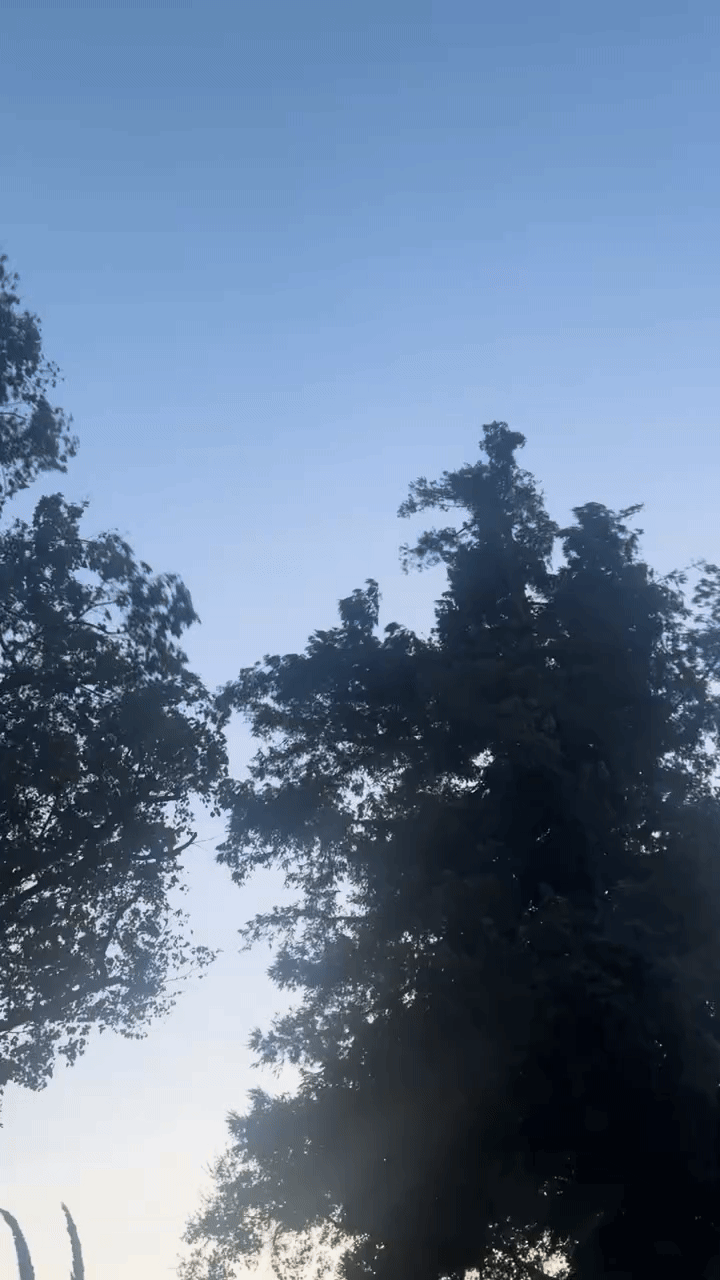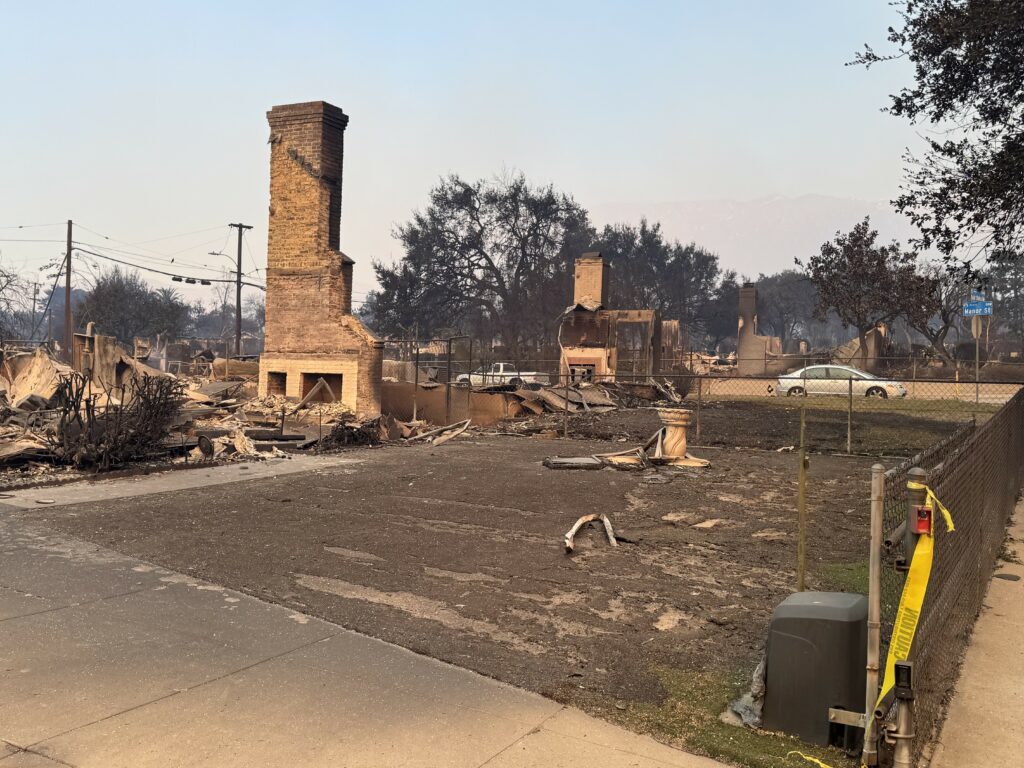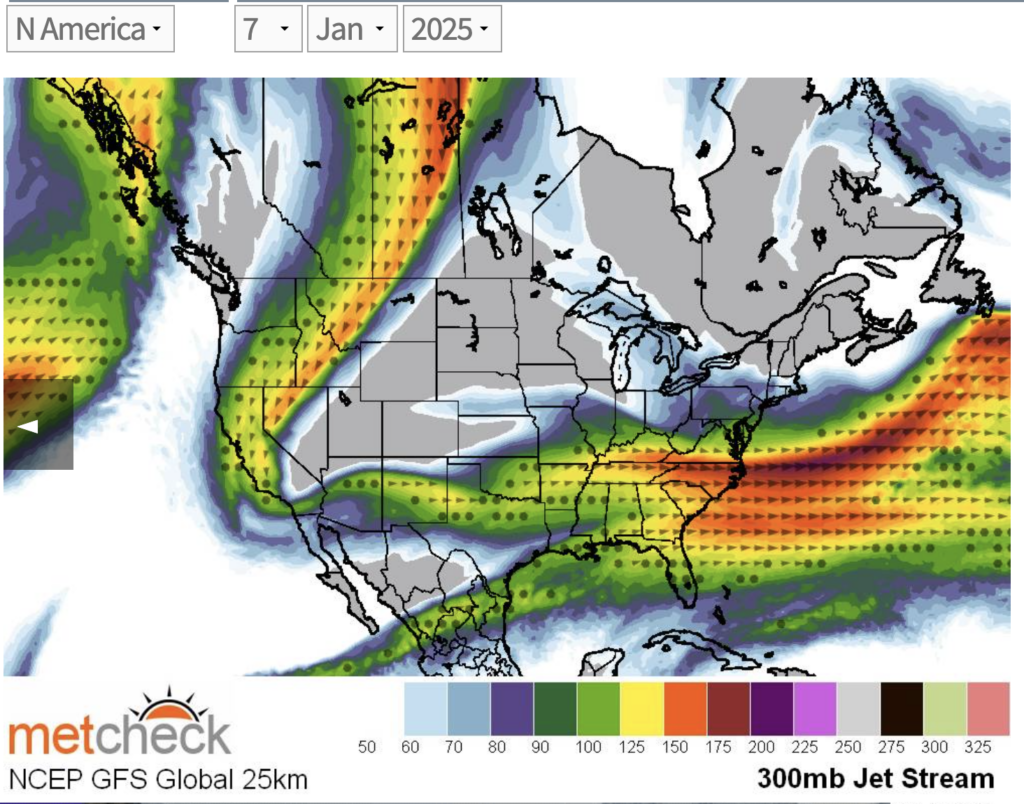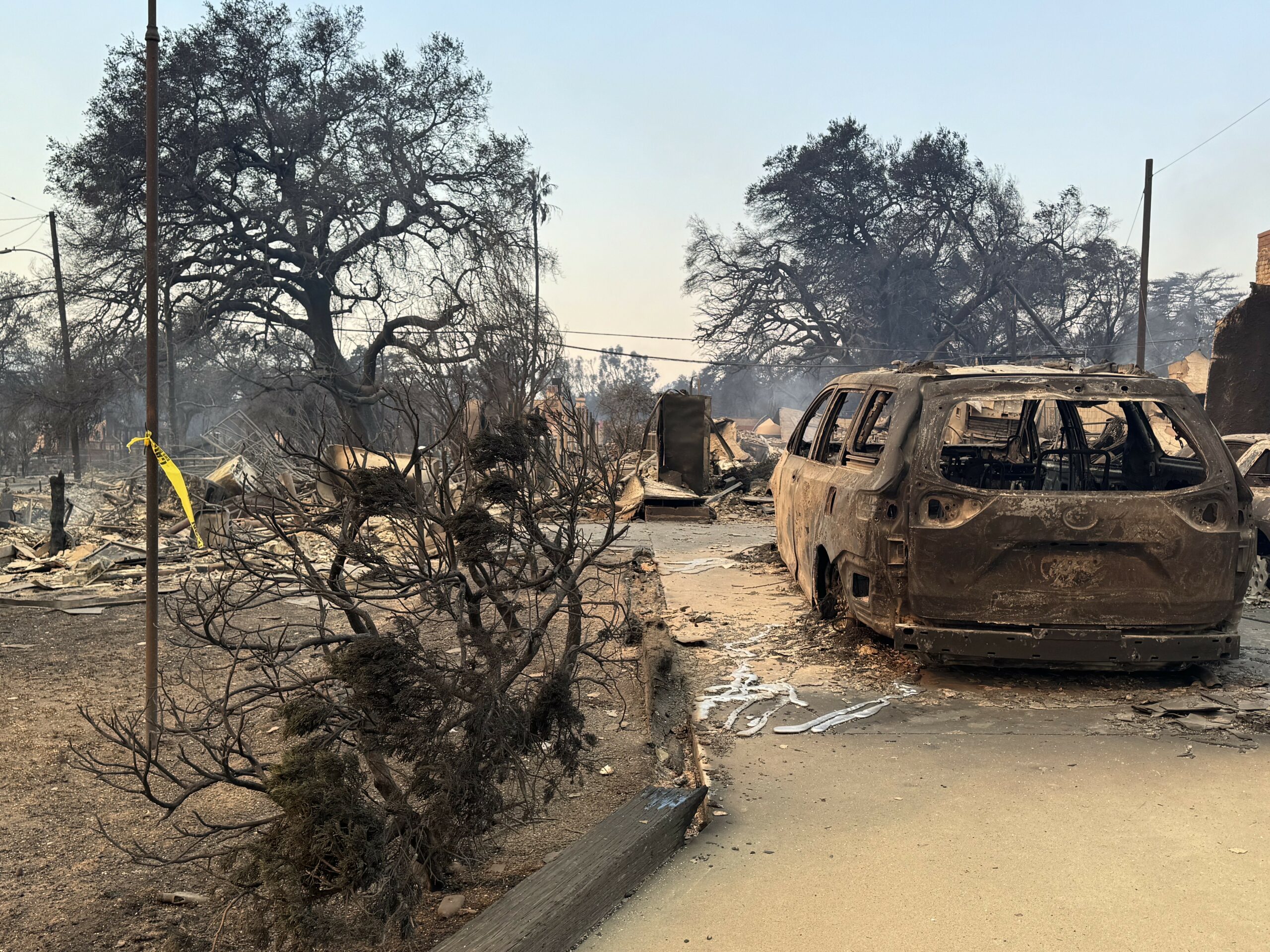We need to understand more about the inordinately destructive Los Angeles firestorms.
Better understanding, for instance, could induce rational changes in local,1 state and federal policy and planning, changes that might enable better containment of future fire in the region and beyond. On January 13, a team of UCLA scientists released a short report that could in time lead to that better understanding.
Entitled “Climate Change A Factor In Unprecedented LA Fire,” the report begins with the UCLA team’s observation that “there is broad consensus” as to the underlying factors, including: “a buildup of fuels—i.e. vegetation—from 2022–2024, followed by a very warm summer in 2024,” delayed onset of “winter rains that normally arrive in November and December,” and “a nearly unprecedented Santa Ana wind event. . . beginning on January 7, 2025.”
Better understanding could lower the risk of repeated catastrophic conflagrations
The UCLA team then set out to “begin to quantify how unusual these factors are, in the context of the natural weather and climate variability.”
Concerning a buildup of vegetation in the recent 2022-24 period, the UCLA team determined that precipitation levels had been high, though roughly on par with prior two-year-high-annual-water-averages since 1980. The scientists described a plausible climate-change mechanism, that is, a warmer atmosphere holds more water vapor that, in turn, can intensify storms (including, along the west coast, atmospheric rivers) – but the UCLA team ultimately did not think that the observational record was sufficient to clearly implicate climate change as an integral cause of the 2023-24 fuels build up.
But what about heat-induced vegetation desiccation? Here the UCLA team determined that there was a precipitous decline in the moisture content in dead vegetation fuels “following the rains of winter 2023-2024,” reaching “below normal levels by early summer, and further declining as the wet season failed to materialize. By January 7th of 2025, dead-fuel moisture was 6th lowest on record for that date.”
The team found, as well, that “[a] likely factor underlying the extreme fuel aridity prior to the January fires was the anomalously hot summer-fall period of 2024.” And that “unusual warmth” in turn “was part of a clear trend towards warmer temperatures over the entire 1895-2024 period. This warming is associated with global trends towards warmer temperatures, which have been attributed to human-induced climate change.”

Regarding the extreme Santa Ana winds that arrived on January 7 — “the final ingredient in a perfect recipe for major wildfire development” — the UCLA team analyzed wind-speed records at three regional airports: Santa Monica, Van Nuys, and LAX.
From that data they concluded that the January 7-8 Santa Ana event was “highly unusual. . .though perhaps not entirely unprecedented.” The UCLA team did not, however, “find any statistically significant trends in wind speeds during Santa Ana days at these three locations” and in part on that basis wrote that they were “hard pressed to name a mechanism whereby a warming climate would favor development of such an extreme Santa Ana event.”
The UCLA team then proceeded to analyze the likely importance of each of the major factors. They concluded, albeit somewhat tentatively, that, “[b]ased on current understanding of the importance of fuel moisture and fuel loads for wildfire behavior in grassland and chaparral ecosystems . . . the fires would still have been extreme without the climate change components . . . but would have been somewhat smaller and less intense. Continued climate change is inevitable over the coming decades, and therefore so is the expectation of even more intense wildfires when all of the other necessary conditions for fire occur (e.g. fuel abundance, dryness, extreme winds, and ignitions).”
Overall I greatly appreciate the UCLA team’s cautious approach, but I’d be remiss, here, if I didn’t hazard my suspicion that, in certain respects, their rapid analysis may under-appreciate the role of human-caused climate change in the LA conflagration.

Photo Credit: James Keller
First, as the UCLA scientists themselves note: “the temperature anomalies” assumed in their own relative-contribution analysis “are relative to a baseline climate corresponding to the 1980-2023 time period” but “substantial anthropogenic warming occurred prior to this period.” Accordingly, their “estimate of the effect of heat anomalies in 2024 is conservative.” Further, the UCLA scientists also observed “that a small part (~10%) of the excess precipitation from during the 2022-2023 and 2023-2024 wet seasons, which led to abnormally high fuel loads, may be climate-change-driven.”
Second, as to the exceptionally-fierce Santa Ana wind event, with additional time I think the UCLA team might well find itself able to “name a mechanism whereby a warming climate would favor development of such an extreme Santa Ana event.” They might, moreover, even discover “evidence that these extreme winds were promoted by climate change.” I’d at least like to see them more thoroughly investigate the question.
Though I am no expert, I’d propose investigating, as such potential relevant evidence, climate-induced changes in the northern-hemisphere polar jet stream. To adjudge from an image I secured from MetCheck, which I reprint below with that group’s permission, there was an unusually wavy polar jet stream flowing a full 270o counter-clockwise around Los Angeles on Jan. 7.

Accordingly, the jet stream may have amplified the pressure difference between the Great Basin region and the LA coast that day. As Jennifer Francis, a Senior Scientist at the Woodwell Climate Research Center, explained to me, “the pressure gradient was boosted by the configuration of the jet stream. The region where upper-level winds are from the north and northeast creates downward motion in the atmosphere that increases the surface pressure, which drove the larger pressure gradient and the Santa Ana winds.”
And as the Santa Ana winds blow westward over high deserts and down into the Los Angeles basin they lose moisture, gain in atmospheric pressure, and gain in heat.
But what has anthropogenic climate change to do with all this?
Well, historically, the northern-hemisphere high-altitude polar jet stream has tended to move eastward around the globe in a relatively narrow band at 50°-60° north latitude. It is the temperature differential between the arctic and lower northern latitudes that has kept the polar jet stream roughly in its lane. But human-caused climate change is warming the poles faster than other regions — indeed, four times faster than the planet as a whole. And so, the temperature differential is lessening; it is thus becoming a less-effective guardrail for the jet stream’s path.
Anthropogenic climate change is warming the poles faster, so the temperature differential is increasingly a less-effective jet stream guardrail.
Accordingly the northern polar jet stream path is becoming wavier in winter, and that development increasingly induces intrusions of cold arctic air deep into our continent and unusual pressure differentials that can produce or amplify wind events in any direction.
There is a burgeoning literature concerning the downwind (ahem) effects of such increasing polar jet stream undulations. Limitations on space preclude a deep dive into the subject here, but it leads me to think that human-induced climate change may have played an even larger role in the Los Angeles conflagrations than the UCLA team of scientists to date have allowed.
Featured Image: Altadena, California. Jan. 9, 2025. Photo Credit: James Keller
Footnotes:
- Some of these changes clearly will have to do with local and regional firefighting strategy and preparedness. See, e.g., A key ‘weakness’ in L.A.’s wildfire strategy went unaddressed for years, Post probe shows. ↩︎


